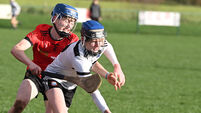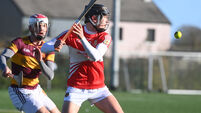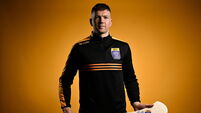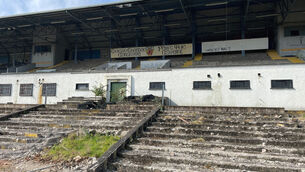Paul Rouse: Rules and referees aren't at the root of hurling's ills
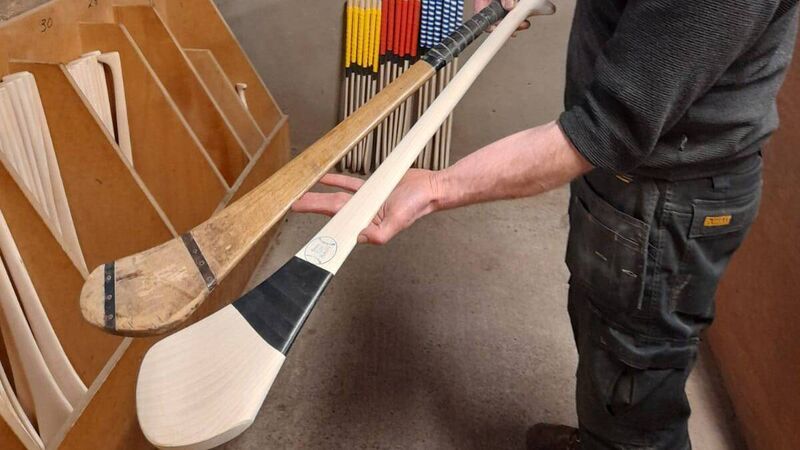
Craftsman Brian Gath in his workshop in Killyon, County Offaly, holding a hurley used by Brian Whelahan in the 1990s and the standard hurley used by adult players in 2021.
There is no doubt that changing rules changes a game. And so it is with hurling at the moment. The introduction of new rules and the application of those rules has impacted on the flow of the play and has led to a fairly startling number of frees being awarded.
There is nothing quite as thrilling as a good hurling match. It pains to say that the number of thrilling matches in the last number of years has been relatively few. Indeed, last year’s championship only excited on the very occasional moment and it is hard to argue that there was even one classic match. The absence of the atmosphere of crowds is surely part of the explanation — but only part. And blaming rules isn’t enough of an explanation either.
This is also a matter of style of play. The glory of hurling has traditionally lain mostly in the contest for the ball. Not the extended rucks type of contest but the fight for a dropping ball (for example) and the skills that are used to win possession and to use it.
The way the game has evolved in recent years has limited the number of such contests in a match. The objective of retaining possession has completely changed the pattern of play. It is an approach that is entirely understandable in the pursuit of victory. Teams are increasingly slow to launch long deliveries in the hope of winning a contest, when they can play the ball through the lines to work a scoring opportunity. But this is a matter of choices made by players and coaches, not of decisions made by referees.
The long arc of hurling scorelines has led to points increasingly being pursued over goals; this is borne out by a simple examination of results over almost 140 years.
It is a trend that appears to have accelerated in recent years — although the work on this remains to be undertaken.
Put simply: it is not the changed rules of the game that has fundamentally shifted the patterns of play, rather it is the changes in equipment and in the medicalisation of sporting performance.
To take the second of those matters first, the fact of it is that hurlers are better conditioned than ever before. The sports-wide evolution in the knowledge of nutrition, hydration, and strength training has led to incremental gains in physical capacity. Specialized coaching and tailored practice has equally improved the performance of certain skills (even if others have been lost).
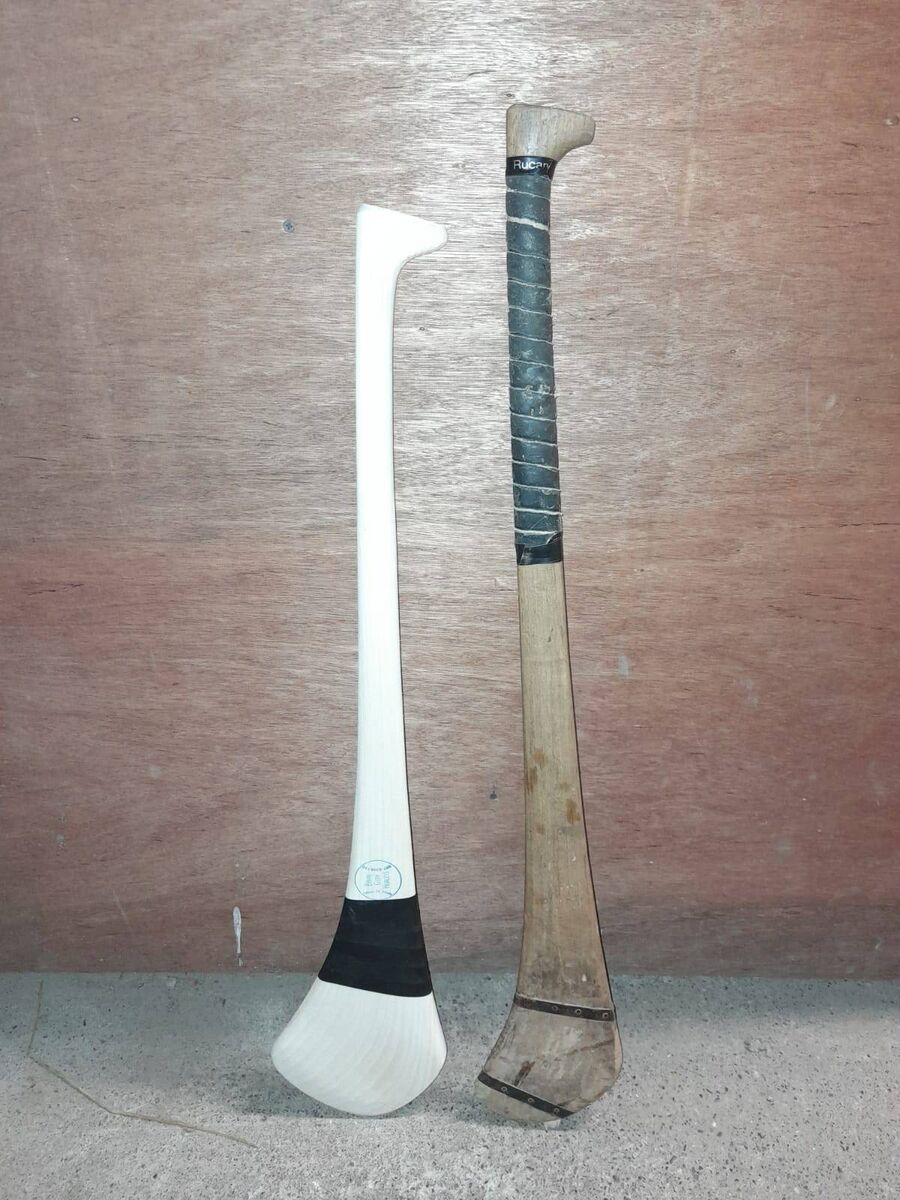
Incremental gains have also occurred through improved playing surfaces, but it is in the transformation of playing equipment that the change in hurling is most obviously manifest.
The sliotars that are used in matches are smoother and have much less by way of rims on them. Controlling a rimless sliotar is an easier task, not least when they do not take on the wet in the same way. And a rimless sliotar travels much further, the drag on the ball being lessened.
And then there is the stick. One of the hurleys that Brian Whelahan used to win All-Irelands with Offaly in the 1990s sits in the workshop of Brian Gath Hurleys up in Killyon in the Slieve Bloom mountains.
When you put it beside a modern hurley, you get a clear indication of just how much the basic implement of the game has changed.
Brian Gath sets out with clarity what has happened: “The hurls have changed completely. There is a good inch and a half, even two inches in the difference between the width of the bas used by Brian Whelahan when you compare it to the ones that the lads use now.”
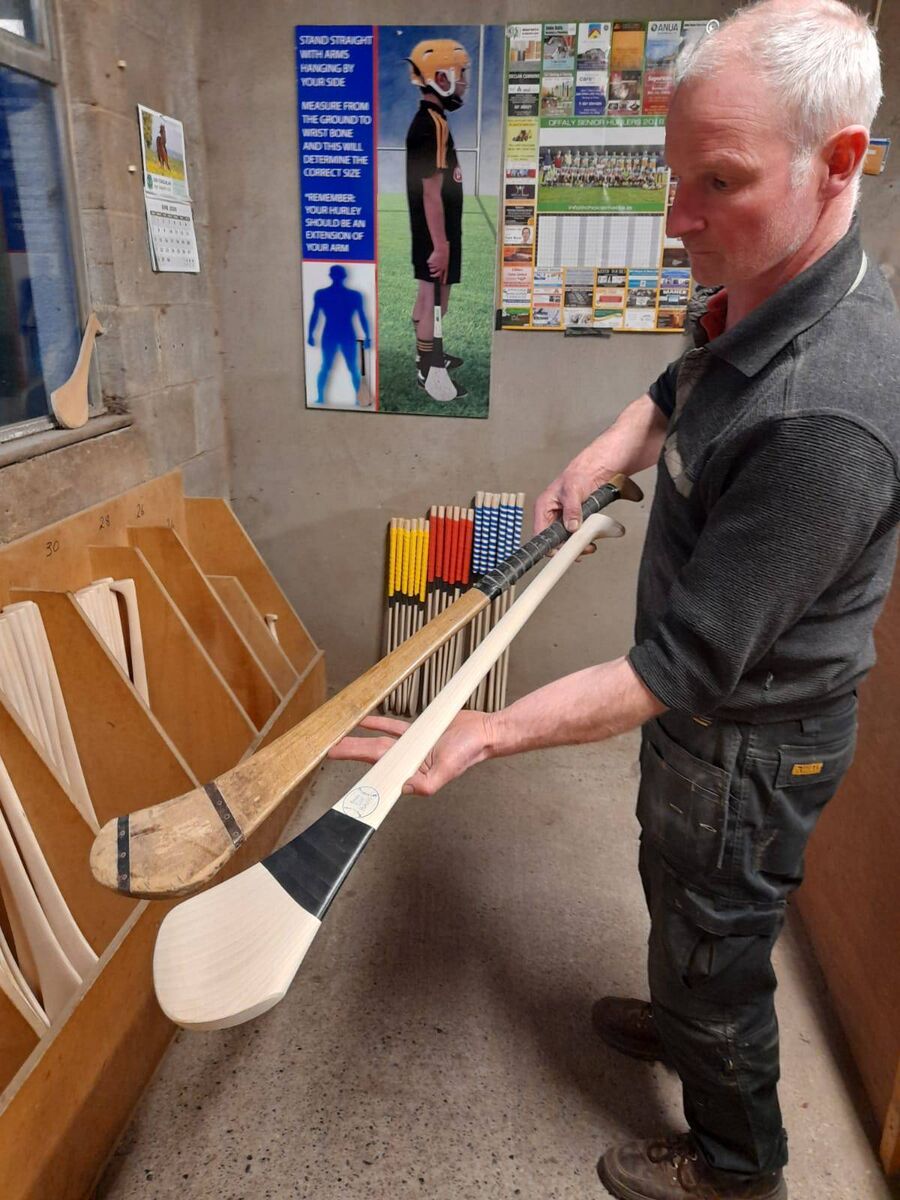
It is not just the width of the hurl that has changed, it is also its length. Almost every hurler playing the game at adult level uses a hurl that is at least two inches shorter than the hurls used only two decades ago.
Said Gath: “When I started making them in the 1990s, almost every hurler wanted a 36” inch hurl. There would be the odd big man who would want a 37” or even a 38” inch one. But it was the 36” one that nearly everyone used. That has completely changed. I would sell 40 hurls that are 33” or 34” now for every single 36” hurl that I sell.”
Gath understands why this has happened: “It’s all to do with the change from ground hurling to lads hitting the ball to each other and handpassing. It’s interesting, if you look at a hurl like Brian Whelahan’s from the 1990s and put it beside one from the 1930s, it would be different, but only a bit different. The amount of change was fairly small. But compare it with the ones now and the amount of change is huge. I think this change began with the way the Cork team of the O’Connors played the game in the early 2000s and it has definitely got more in the last few years.”
The scale of change is undeniable: “Basically what we are making now is more like a bat. It’s shorter and wider, and even a bit more rigid.”
This is not, by the way, to suggest that modern hurlers could not manage the skills of the game with old-style hurleys. That would be nonsense. And anyone who watched the documentary on Christy Ring before Christmas will have seen the great Patrick Horgan master a hurley that replicated the design used by Ring.
Nor is this simply a nostalgic lament for all that has been lost, for the rising dust in a square as a ball dropped and players swinging ash with raw abandon. No game stays rigid in a particular form and nor should it. The story of every sport is the story of teams trying to find new ways to win and of using such tools as most suit them to pursue that win.
Nonetheless, there is no virtue in avoiding the obvious reality that new technologies change every sport. Look at what is happening in golf, for example. And hurling cannot stand immune to this.
In this instance, it now means a game where players routinely scoring points from their own half of the field is a logical extension of this change. This has an inevitable impact on the pattern of play.
On the one hand, the game is incredibly skillful now. Players can do things with exceptional precision. They can whip the ball from hand to hand and strike with such accuracy that it is now surprising to see a miss or even a mistake.
On the other hand, can it be said that a hurling match is now more entertaining as a spectacle? To be clear, there is no obligation on amateur players to provide a spectacle.
But for the long-term lore and lustre of the game, it does matter to a sport that it thrills. Especially one where the rhetoric so often stresses the excitement of the clash. More than anything else, extending back even to the years before the GAA was founded, the essence of hurling, all the epic stories that were told, was rooted in the raw passion of a contest.
So here are a few questions for hurlers:
Should the width of a hurley be lessened?
Should the sliotar be made heavier or a little bigger or more rimmed?
Should the value of a goal be increased (to, say, four points) to shift the risk/reward factor?
Or are things grand and should well enough be left alone?
The bottom line is that the current row over rules and their application is just a passing squabble; the bigger issue is the long term shift in how the game is played.

